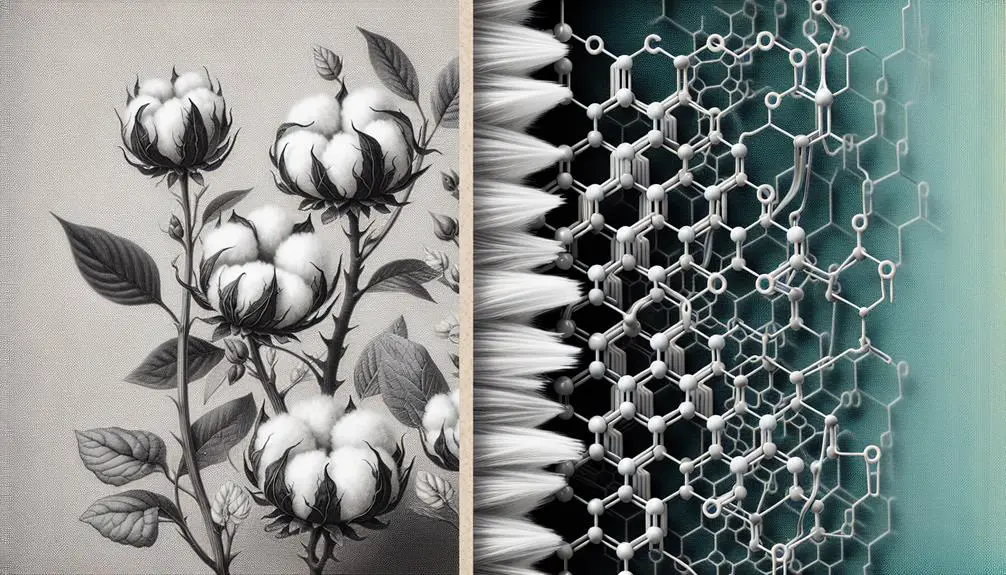So here's the deal: when folks talk about satin, they're often scratching their heads, wondering if it's made from cotton or polyester. Honestly, I've seen both, and each brings its own vibe to the table. Cotton satin? Super soft, breathable, pretty much what you'd want for a cozy night in. Polyester satin, on the other hand, is your go-to for durability and ease of care, not to mention it won't break the bank. Now, I'm not picking sides just yet, but I'm curious about what drives people's choices. Is it the feel, the cost, or maybe something else? Let's unpack this a bit more and see if we can get to the bottom of it.
Table of Contents
Key Takeaways
- Satin is a weaving technique, not a specific material, and can be made from either cotton or polyester.
- The choice between cotton and polyester satin depends on preference for natural or synthetic fibers.
- Polyester satin is known for its durability, wrinkle resistance, and ease of care.
- Cotton satin offers a softer feel and breathability but requires more attentive care.
- Both cotton and polyester satin provide the glossy surface and smooth texture characteristic of satin fabric.
Understanding Satin
Diving into the world of textiles, it's crucial to know that satin isn't just one specific fabric but a unique weaving technique that can transform various fibers, including silk and polyester, into the sleek, shiny material we all love. The real magic of satin lies in how it's made. It's all about the weave, not just the fiber. This method gives satin its signature glossy surface, making any piece of clothing or bedding look and feel luxurious.
When we talk about satin, we're really diving into a world where both natural and synthetic fibers meet. Whether it's the silky smoothness of silk satin or the durable, easy-care nature of polyester satin, the final product always has that characteristic shine. It's fascinating how the same weaving technique can bring out the best in both silk and synthetic fibers, offering a range of satin products to suit different tastes and budgets.
Understanding satin is key for anyone passionate about textiles. Knowing it's more about the weave than the material itself opens up a whole new perspective. Whether you're eyeing a silk gown or a polyester pillowcase, remember, the luxurious feel of satin doesn't discriminate between natural and synthetic.
Cotton Vs. Polyester Satin
Alright, let's get into the nitty-gritty of cotton vs. polyester satin.
We'll look at where these fibers come from, how they feel and last, and what you need to know to take care of them.
I'm here to break down the facts, so you can make the best choice for your satin needs.
Fiber Origins Explored
Exploring the origins of satin's fibers reveals a world where polyester and cotton duke it out, each bringing unique perks to the fabric table. Polyester, a synthetic fiber, shines for its durability and wallet-friendly price. It's the go-to for those who hate ironing but love the sleek look. Cotton satin, on the other hand, is all about that comfy, soft vibe with a luxurious sheen, thanks to its natural fibers.
| Feature | Polyester Satin | Cotton Satin |
|---|---|---|
| Fiber Type | Synthetic | Natural |
| Durability | High | Moderate |
| Care | Easy, wrinkle-resistant | Requires more attention |
| Cost | More affordable | Pricier |
| Feel | Smooth | Softer, breathable |
Deciding between the two? It's all about what's your priority: durability and ease, or natural comfort and luxury.
Texture and Comfort Comparison
When it comes to texture and comfort, cotton and polyester satin sure have their own unique feels. Diving into this comparison, let's break it down:
- Polyester Satin: It's like sliding into a pool of silk. The texture is smoother and gives off a more luxurious vibe. Its shine can make anything look upscale.
- Cotton Satin: It's the cozy hug at the end of a long day. Being a natural fiber, it offers that soft, breathable comfort that's hard to beat, especially for sensitive skin.
- The Feel: If you're after that sleek, glossy appearance, polyester's your go-to. But for that natural, gentle-on-the-skin touch, cotton takes the prize.
- Personal Preference: It really boils down to what you value more— the synthetic silkiness of polyester or the comfort of cotton's natural touch.
Each has its charm in the satin weave world, making the texture and comfort comparison a matter of personal choice.
Durability and Care Instructions
Let's dive into how cotton and polyester satin stack up in terms of durability and what you need to know about caring for each. I'll keep it straight to the point.
Polyester satin, thanks to its synthetic weave, is the heavyweight champ of durability. It's less likely to wrinkle or lose its shape, meaning it can take the daily grind without looking tired. Plus, it's a breeze to care for; a simple wash and dry, and you're good to go.
On the flip side, cotton satin is a bit more high-maintenance. It demands gentle care to keep its sheen and is prone to shrinking and wrinkling. So, if you're after ease and longevity, polyester's your go-to. But for those who prioritize natural fibers, just know cotton requires a bit more TLC.
Satin Production Process
To understand how satin becomes that shiny fabric we all love, it's key to dive into its production process. Let me break it down for you, focusing on the essentials so you can really get the gist of how this luxurious fabric comes to life.
Here's a quick rundown of the satin production process:
- Choice of Material: Whether it's silk, polyester, or nylon, the choice significantly influences the final feel and use of the satin. Historically, silk was the go-to, but nowadays, synthetic fibers like polyester and rayon are more common.
- Weaving Technique: This is where the magic happens. The weaving technique used for satin involves a specific pattern that allows threads to float over others, creating that smooth and shiny surface we're all after.
- Finishing Touches: After weaving, the fabric undergoes processes to enhance its smoothness and sheen, making it truly stand out as a luxurious material.
- Quality Check and Use: Finally, the satin is inspected for quality before being turned into those gorgeous dresses, comfy bedding, or whatever product it's destined to become.
Characteristics of Satin
Satin's silky sheen isn't just for show; it's a hallmark of its unique weaving technique that sets it apart from other fabrics. When I first learned about satin, I was surprised to find out it's not about the material itself but how it's made. This weaving technique can involve various synthetic fibers like polyester, nylon, or rayon, which contribute to its characteristics.
What grabs me about satin is its incredibly smooth texture and glossy surface, which gives anything made from it a luxurious feel and an elegant look. Whether it's bedding, lingerie, or a fancy dress, satin adds a touch of class. It's this shiny, elegant appearance coupled with a soft, supple texture that makes satin a go-to for products aiming for that high-end vibe.
Moreover, satin's ability to drape well seals the deal for me. There's something about the way it falls and folds that screams sophistication. Whether it's the fluidity of a gown or the neat corners of a pillowcase, satin delivers. And despite the synthetic fibers, this fabric manages to maintain a breathability that's quite unexpected, making it versatile across seasons.
Advantages of Polyester Satin
So, let's talk about why polyester satin is pretty cool.
First off, it's tough as nails and doesn't get wrinkly like its silk cousin, which is a huge bonus.
Plus, tossing it in the wash? No problem, it can totally handle it.
Durability of Polyester Satin
Boasting remarkable durability, polyester satin holds up well for daily use without showing signs of wear and tear. Here's why it's a fantastic choice:
- Long-lasting properties – It's incredibly durable, making it a practical pick for anything from fashion to home decor.
- Resistant to wrinkles – You'll spend less time ironing since it keeps its smooth look with minimal effort.
- Strength of polyester fibers – These fibers are tough cookies; they resist tears, snags, and general wear, ensuring your items look new for longer.
- Cost-effective option – Being durable means you won't have to replace items often, saving you money in the long run.
In short, polyester satin's durability makes it an unbeatable, easy-to-care-for choice for a luxurious feel without the high maintenance.
Easy Care Instructions
Now that we've covered its durability, let's talk about how polyester satin is also a breeze to look after. Honestly, this fabric is a godsend for anyone with a packed schedule.
You can pop it in the washing machine with cool water and a bit of mild detergent. No need for the delicate hand-washing that silk demands. And guess what? It can be tumble dried on a low setting. This means you're not waiting around for it to air dry. Its resistance to wear means it can handle frequent washing without losing its charm.
This easy care routine makes polyester satin a super practical choice for everyday use. It's all about making life simpler, and polyester satin nails it.
Benefits of Cotton Satin
Cotton satin's blend of softness and sheen brings both comfort and elegance straight to your bedroom. As someone who's always on the hunt for the perfect fabric type that marries style with practicality, I've found that cotton satin hits the mark every time. Let me break down why this fabric stands out:
- Luxurious Sheen: The first thing you'll notice is its luxurious sheen. It's not just about looking good; this sheen makes your bedroom feel more upscale without trying too hard.
- Comfortable: Thanks to the natural fibers, it's incredibly comfortable. Whether it's summer or winter, this fabric feels just right against the skin.
- Durable: Don't let the softness fool you; this stuff is durable. It can withstand wash after wash, making it a practical choice for everyday use.
- Breathable: Being made from cotton, it's naturally breathable. This means no more waking up feeling too hot or too cold.
In essence, cotton satin isn't just another fabric type; it's a game-changer for anyone who values comfort, durability, and a touch of elegance in their textiles.
Choosing Your Satin Fabric
When it comes to picking your satin fabric, understanding the differences between materials like polyester and silk is key. Both bring something unique to the table, and knowing their pros and cons can really steer your decision in the right direction.
Satin, as you know, isn't just one thing. It's a weave that gives fabric that shiny finish we all love. But the feel and the cost? That's where your fabric choice kicks in. Polyester satin, for instance, is made from synthetic fibers. It's the go-to for many because it's more affordable compared to silk satin. Plus, it nails that shiny and smooth appearance that's pretty much the hallmark of satin.
But here's the thing, silk and polyester satin aren't interchangeable. Silk's got that luxurious feel, a kind of prestige that polyester struggles to match. Yet, polyester wins in the durability and ease-of-care departments.
Frequently Asked Questions
Is Satin a Cotton Fabric?
I've learned satin isn't just a cotton fabric; it's a weave that can use materials like polyester too. Cotton satin exists, but it's more about the weave than the material itself.
What Type of Fabric Is Satin?
Satin's a fabric known for its glossy surface, made through a special weaving technique. It's not just one material but can be silk, polyester, or nylon, each giving a distinct shine and feel.
Is Satin a Breathable Fabric?
I've found that satin's breathability really depends on its material. Silk satin lets my skin breathe way better, keeping me comfy. Polyester satin, though, tends to trap heat, making me feel all sweaty.
What Are the Disadvantages of Satin Fabric?
I've found that satin fabric's disadvantages include it being less breathable, prone to snagging, and often lacking the luxurious feel of silk satin. It's also less eco-friendly and might have a duller finish.
- How Does Ring Spun Cotton Affect Garment Fit and Shape Retention? - August 13, 2024
- What Are the Challenges in Producing Ring Spun Cotton? - August 13, 2024
- Is Ring Spun Cotton Suitable for Plus-Size Clothing? - August 13, 2024







